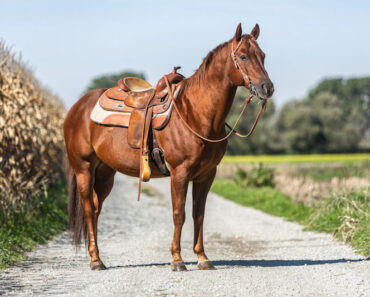Wood was humanity’s first source of fuel, and even today, it’s one of the most reliable resources in many parts of the world. The usage of this fuel source varies from one culture to another, and the various geographic regions have influenced how firewood is managed, from hewing to heating.
There are many things you need to learn about using firewood for heating your home, and the first thing one needs to acknowledge is that no wood is equal when it comes to its heat value. The heat output is measured in BTUs (British thermal units), and it can be described as the amount of heat generated to raise the temperature of 1 pound of water by 1° F.
Starting with the basics
Most folks will usually buy wood for heating their homes, and they generally get a mix of hardwoods. Hardwoods are the best type of wood in terms of heat efficiency. They burn cleaner and have a better BTU output compared to softwoods. It is estimated one cord of hardwood can produce as much heat as the equivalent of 150 to 250 gallons of fuel oil.
Even if there’s no doubt that hardwood is much better to be used for heating purposes, there’s also a hierarchy within the class that should be acknowledged, and the various species of hardwood have different BTUs.
In general, if you want to control the heat output, you should control the species of wood you buy to feed your stove. In some cases, this means you have to cut your own firewood.
Regarding the firewood acquisition, you can buy wood by the cord or face cord. The size of a cord measures 4 feet by 8 feet, and each piece of wood is 4 feet in length. As for the face cord, the size is similar, measuring 4 feet by 8 feet, but the size of the wood pieces varies from 12 to 32 inches.
If you decide to buy firewood, you have to examine it carefully. For example, seasoned wood is noticeably lighter than greenwood, and it has those specific cracks at the ends. These cracks occur only when the wood shrinks after drying for a considerable amount of time.
One trick I’ve learned to differentiate seasoned wood from green or “almost seasoned” wood is to knock two pieces together. If they give out a high-pitched, hollow sound, then it’s clear I’ve got the suitable lumber. If they give out a dull thunk sound, then it means the logs are wet, and I need to look somewhere else.
Getting your own firewood
As I said previously, an alternative to buying wood is scavenging and cutting your wood. If you decide to scavenge firewood, stay away from construction sites since the wood they’ve used might be laced with all sorts of poisonous chemicals, and it’s not suited for burning. Other than that, pretty much anything goes as long as the wood is not treated with paint or chemicals.
If you have your own woodlot and you’re culling trees from your property, you should resist the urge to cut the straight trees. Most folks go for these trees because they are easier to split. However, it’s recommended to bring down the misshapen or crooked trees that grow under the canopy of other trees, and you should also go for the wolf trees.
If you wonder what wolf trees are, these are the tall forest trees with a large girth and big spreading branches that prevent other trees from growing. A wolf tree is surrounded by smaller trees that have a hard time developing due to the large canopy covering them.
Culling these trees is recommended because it will give the other trees a better chance of developing, and your woodlot will get healthier and faster-growing trees. They will be worth more than the misshapen trees, producing more firewood.
Cutting and splitting recommendations
If you’re going for felled or scavenged logs, you should cut them into a crosswise section (called rounds). You can split the rounds when you get the chance, but it’s recommended to split them right away while they’re still wet. It makes splitting much easier and provides more drying time for the wood. Each round you split should be 16 inches in length to fit into the average stove.
If you have logs with a smaller diameter, use a sawbuck to make your life easier. If you’re dealing with larger logs, you should cut these on the ground. Start by cutting most of the way into the log, roll the log half a turn, and then cut all the way through.
Pay attention and avoid touching the ground with your chain because it will get dull in no time, and you will have to sharpen or swap it to continue cutting the wood. Also, in some cases, you will need to use a cant hook or a peavy to roll the log with ease.
If you plan on splitting logs regularly and you depend on firewood for heating your home or if you’re selling the wood, you should get a gas-powered splitter since such a tool becomes indispensable. However, if you’re dealing with ten cords or less per season, all you need to do is get an 8-pound splitting maul, a splitting block, have some spare time, and be physically able to do the job.
I never bother splitting logs that are less than 3 inches in diameter, and for everything between 3 and 6 inches in diameter, I just cut them in half. If I have logs up to a foot in diameter, I cut them into quarters, and for anything more significant than that, I split triangles from the center of the log and then cut those into pieces that fit into the stove.
Storing the firewood
Contrary to popular belief, the firewood is not neatly stacked for aesthetic purposes, and there’s a more practical reason behind stacking the firewood in a certain manner. The form must follow function, and the way you stack your firewood should facilitate its drying. The best form for stacking firewood is the New England method, so here’s how to do it:
- Start by separating the firewood from the ground. You will need to provide a ground cover that provides at least 5 inches of space from the ground. This will prevent moisture from being sucked by the wood, allowing air to circulate into the firewood stack. You can use wood pallets as a foundation.
- Place the wood pallets anywhere on your property, but keep in mind that the area you pick for storing your firewood should incorporate a few key factors. It should get a fair amount of sunlight. It should not be completely sheltered from the wind. It should be located in a place that’s readily accessible for getting the wood faster and moving it inside with ease. And most of all, the location should have an overhang cover that protects the wood from the elements.
- Avoid doing it in parallel rows when stacking the wood and use a cross-pattern of courses on the pallets. As you build up, each row of wood needs to be perpendicular to the one beneath.
You’re aiming for structural integrity when building up, but the idea behind the cross-pattern is to expose as much wood surface as possible to sun and wind. Such structure will assure maximum airflow, and it will allow warm air to rise through the slats of the palettes up into the stack.
Since up to 50 percent of the wood is water, drying your firewood becomes a critical task if you’re aiming for maximum heating efficiency. If you’re burning wet firewood, the water boiling off is nothing but wasted energy. Even more, wet wood produces excess smoke, and it reduces the burn efficiency by as much as 25 percent.
When drying wood, you should aim for wood with less than 20-percent water. The best way to figure out how dry the wood requires a wood moisture meter. In general, it takes between 6 months and one year to dry the wood to that level of dryness, depending on the region you live in.
Besides providing better heat efficiency, dry wood is also easier to carry, it ignites easily and produces less smoke, making it less likely to line the chimney with creosote.
Burning firewood efficiently
When you start the fire in your woodstove, you want it to be small and hot at first. In the beginning, there will be a good amount of smoke emanating from the chimney, but as the fire becomes hotter, there will be no more smoke and just heat waves emanating from the top of the chimney.
When the fire is burning steadily, you can close the stove door completely and set the dampers. Proper draft adjustment is achieved depending on the stove you’re using (since every stove is different) and only after a decent amount of trial and error.
When the stove is lit, open the door about half an inch and make sure the drafts are wide open. When you notice the stove is getting hotter and there’s no more smoke emanating from the top of the chimney, you can fill the stove box and shut the door completely. You should leave the draft open for a few more minutes (10-15 minutes) and begin closing it gradually.
Make sure you watch the fire as you close the draft gradually and don’t allow it to smolder. The fire can get lower as you close the draft, but it shouldn’t be allowed to smolder. Before going to bed, you can add one or two large logs into the stove, but make sure the draft is slightly open just enough to maintain a low flame.
Regarding the burning time, this depends on the logs you are using, and while smaller logs are good for starting the fire, larger logs should be used for a continuous burn. I’ve noticed that if I pack the logs tightly in the stove, they burn longer.
Smoke problems
Some folks will inadvertently deal with smoke when using their stove, and the main reason that causes the back-puffing of smoke into the room is the temperature of the chimney. To put it simply, if the chimney is cold, the air inside it will also be colder. If you haven’t started a fire in the stove for a while, or if there’s too much time passing between fires being lit in the stove, there will be a column of cold air forming in the chimney.
Once you light the fire, the cold denser air will block the warmer air that carries the smoke from rising, and you will experience back-puffing. The solution to this issue would be to light the new fire as quickly as you can and prevent the residual heat from the night’s fire from getting cold, or you can heat the air in the chimney using whatever method you like.
I’ve often used balled-up paper to heat the chimney on cold mornings. I ball up newspapers and impale it on the end of a long poker. I light it up and shove the poker up the flute. This works most of the time, but it also depends on how cold the weather is.
Picking a stove
A good stove makes all the difference, and contrary to popular beliefs, bigger is not better when it comes to picking your stove. Marketing trends will have you believe otherwise, but a smaller stove is much more efficient than a larger one since the larger the stove, the more heat will be produced, which may lead to too much heat being produced for the given area.
This means that those with a large stove have to burn their firewood at a smolder. In time this will lead to creosote buildup and firewood waste. For example, you should calculate the BTU output of your stove to cover the size of your home.
In my case, for our cabin, which is roughly 1,000 square feet, I’m using a 40,000-BTU stove. If I needed to heat a house that has double the size, I wouldn’t double the size of the stove, and I will probably get a 60,000-BTU stove.
Picking a stove can be quite tricky, and many other factors should also be considered. However, don’t believe that “the bigger the stove, the better” trend since you’ll waste money and firewood if you pick a big stove.
Concluding
Wood burning remains a safe bet for heating your home even nowadays, with many other fuel options available. It’s still one of the most efficient ways to heat your home during the colder months. It all starts with wood management, and hopefully, this article will help you better heat your home this winter.



![Has the World Gone Mad? Racism in Media [PODCAST] Has the World Gone Mad? Racism in Media [PODCAST]](https://survivalcove.com/wp-content/uploads/2021/11/survival-preppers-podcast-banner-370x297.jpg)


![[VIDEO] Transforming an LMTV into the Ultimate Bugout Overlander – Part 5 [VIDEO] Transforming an LMTV into the Ultimate Bugout Overlander – Part 5](https://survivalcove.com/wp-content/uploads/2023/02/lmtv_article_edited-370x297.jpg)





















